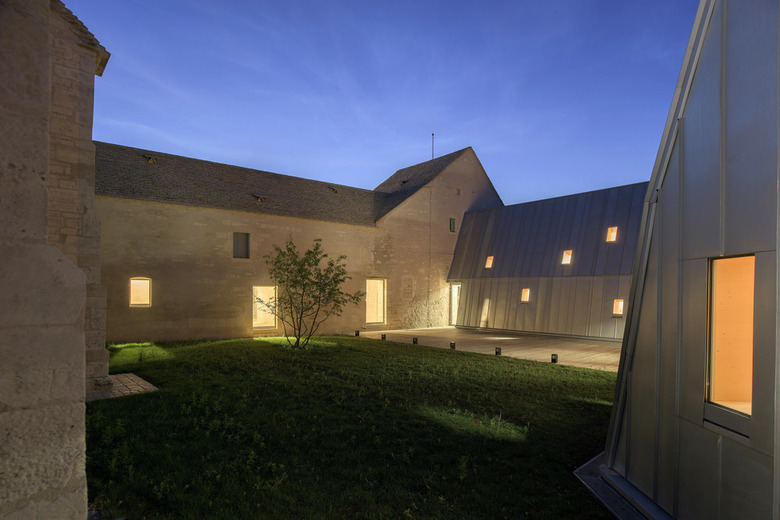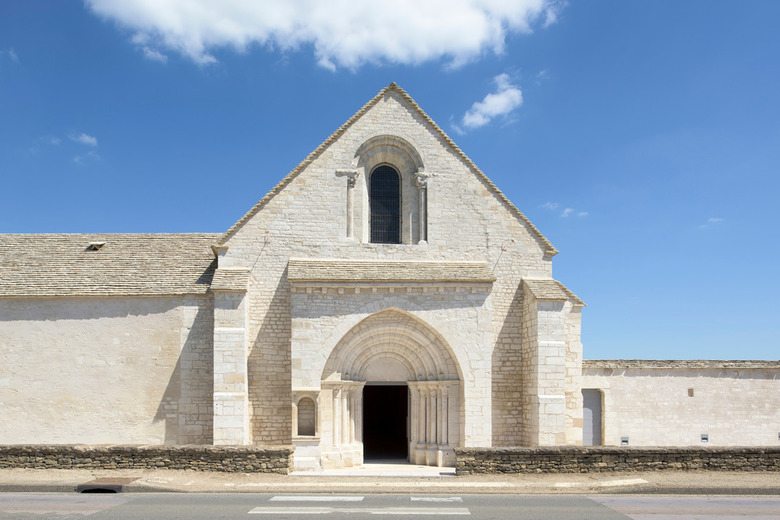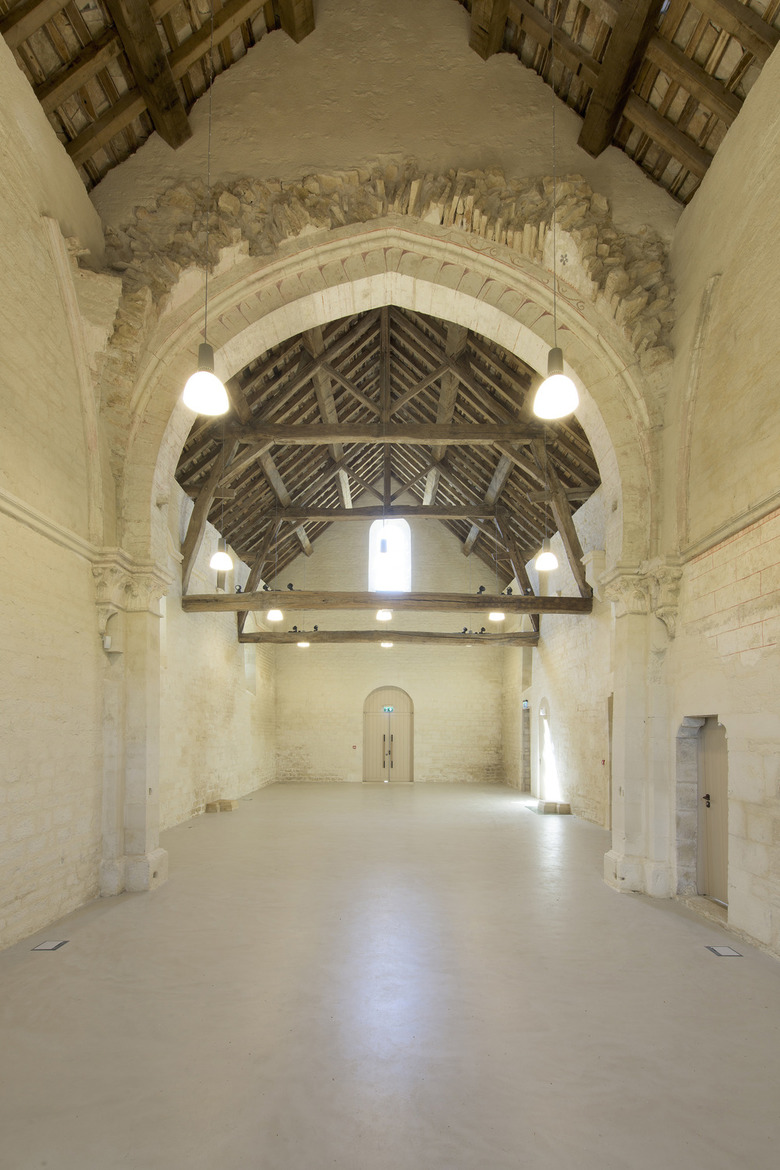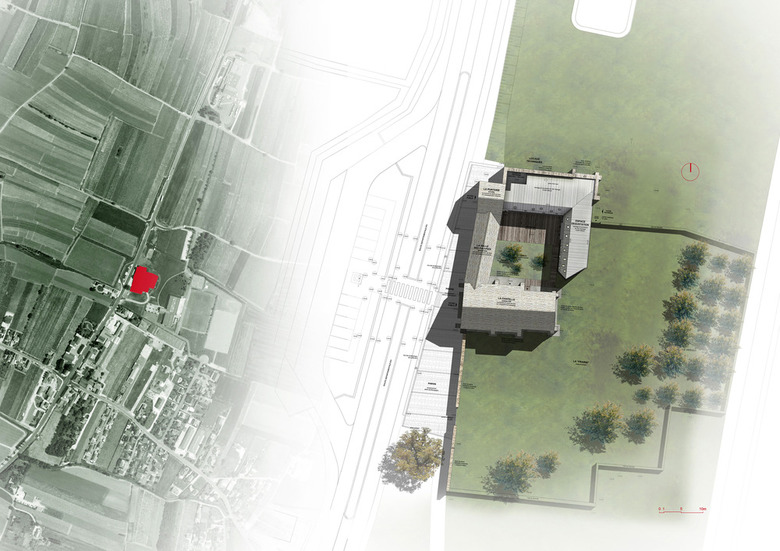JUNG Architectures & Simon Buri
Conversion of the Former Hospital of Meursault
JUNG Architectures & Simon Buri
22. maart 2017
Photo: Martin Argyroglo (All photographs courtesy of v2com)
The municipality of Meursault is located in the heart of the Burgundy vineyards of Côte de Beaune, in the department of Côte-d'Or. Meursault, a flagship of Burgundy great wines, has an undisputable world-wide reputation, and its "Climats" have been classified as World Heritage by the UNESCO since 2015. The former Hospital is a showpiece of Meursault’s rich architectural heritage.
History
The former Hospital of Meursault, commonly called the "Leprosarium," was founded by Hughes II, Duke of Burgundy, at the beginning of the XIIth century. Initially a medical hostel administered by a monastery, it was dedicated to shelter indigent persons, but also pilgrims, beggars and soldiers. At that time, it was organized in three sections: the Gatehouse, the Poor Hall, and the Chapel. In 1760, the Hospital became associated with the Hospices of Beaune by royal order of King Louis XV. Used for several centuries as a hostel, the buildings were thereafter transformed into a coach house, and recently converted into an agricultural farm. They have been listed in the Inventory of the French Historic Monument Society since 1926.
Photo: Martin Argyroglo
Landscape Approach
The key element, the genius loci, resides in the strong insularity of the site, linked to its protection, and at the same time to its remoteness from the village. The site of the former Hospital, surrounded by a mineral enclosure, was located on the outskirt of the village, between buildings, agricultural crops and vineyards, at the junction of the hills and the plain, along the road trodden by Middle Age pilgrims. The walls of this enclosure had largely disappeared, but their layout still remained discernible.
After an analysis and an archaeological study, an interpretation of this enclosure in its entirety has been performed, marked by a vegetation hedge aligned on this still strong delineation, and has been continued with the rehabilitation of the remaining stone walls, which support the new construction. A conservatory orchard has been created in the open space inside the enclosure, offering opportunities for potential new archaeological digs. To the west, a mineral piazza welcomes visitors and marks the entrance to the wine-making village of Meursault.
Photo: Martin Argyroglo
Photo: Martin Argyroglo
Programmatic Organization
The municipality of Meursault acquired the buildings of the former Hospital in 1990. In line with the process of listing the Climats of Burgundy vineyards as World Heritage by the UNESCO along with a project of touristic redevelopment of the site, the program’s primary purpose was to protect and preserve this XIIth century historical heritage through thorough rehabilitation works, but also to create a venue for public events in all seasons.
The Gatehouse hosts the Tourist Information Office, while the Poor Hall and the Chapel, with its own access to the piazza, comprise temporary exhibition areas. In the immediate vicinity of the Gatehouse, the Community Hall is located in a restored adjacent wing, and inserted in stone walls rebuilt as an exact replica. Together with the Chapel, it encloses an outdoor space, as a remote metaphor of a cloister, and allows the various rooms to have access to more secluded and protected extension areas, arranged around a garden.
Photo: Martin Argyroglo
Photo: Martin Argyroglo
Intervention on the Ancient Architecture
The buildings had been left abandoned and derelict for a long time, and retained only partly their original layout. Our intervention was in line with this history made of successive additions and destructions. Major restoration works have thus allowed to preserve this patrimonial complex. The objective for the older parts was a reconstruction as close as possible to their initial setup, that would avoid a hazardous restoration of supposedly original volumes. A campaign of archaeological excavations has brought to light the site foundations, and also generated numerous constraints that had to be integrated in the project. Significant elements that were still present have been systematically reused and reorganized according to their initial logic (framework, openings, levels…). Openings that were still visible have been reopened in order to fully enjoy the natural light. Emphasis has been put on the creation of contemporary stained glass windows.
Photo: Martin Argyroglo
Photo: Martin Argyroglo
Contemporary Intervention
A sober and minimalist approach has been privileged, by combining timeless materials such as Burgundy stone and wood to more recent ones: concrete, glass and zinc. The conception of the contemporary extension has been guided by the same concern to respect the initial arrangement of the site. Inserted between rebuilt walls that are still partly visible from the inside, the building aims at establishing a dialogue, through its geometrical modulations, with the architecture of the older buildings.
The monolithic contemporary shell has been assembled in Azengar® zinc, newly created by company VMZ. The zinc's materiality, through its minerality and roughness, has allowed to generate a remarkable harmony with the Burgundy stone. From the Gatehouse, openings become increasingly denser and wider, from shadow to full light, and enhance views on the landscape and the historical architecture.
Photo: Martin Argyroglo
Photo: Martin Argyroglo
Image: JUNG Architectures
Image: JUNG Architectures
Image: JUNG Architectures
PROJECT DETAILS
Client
Municipality of Meursault (Côte-d’Or)
Project Management
Simon Buri, representative architect (heritage section) / Jung Architectures, associated architect (contemporary section) - Jean-Claude Calédonien, architect in charge
Program
Conversion of a former XIIth century Hospital, listed in the Inventory of the French Historic Monument Society, into exhibition areas, and extension of existing buildings for the creation of a Community Hall
Team
Group SLH, BET TCE - ECRH, economist
Project year
Completion in March 2015
Area
450 sqm of SHON (Habitable Net Surface Area) + 3,000 sqm of gardens
Budget
2,800,000 € excluding taxes
Photographs
Martin Argyroglo
Gerelateerde artikelen
-
Conversion of the Former Hospital of Meursault
on 22-03-2017












